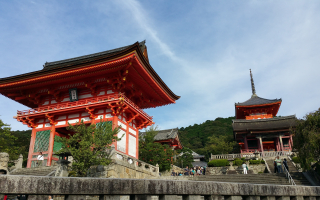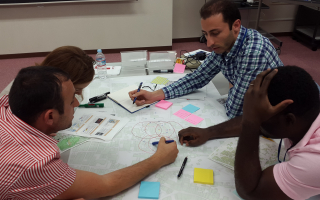Thirteen International Training Course (ITC) on Disaster Risk Management of Cultural Heritage
Organized by Institute of Disaster Mitigation for Urban Cultural Heritage, Ritsumeikan University, in cooperation with UNESCO, ICCROM, ICOMOS/ICORP & ICOM.
Sub theme of ITC2018
Towards Integrated Protection of Immovable and Movable Cultural Heritage from DisastersCultural heritage is increasingly exposed to disasters caused by natural and human induced hazards such as earthquakes, floods, fires, typhoons, theft, terrorism etc. Recent examples include Earthquakes in Central Mexico in 2017, Central Italy and Myanmar in 2016, Nepal earthquake in 2015, UK floods in 2015, Balkan floods in 2014 and ongoing conflicts in Syria and Yemen. These disasters not only affect the immovable heritage components such as monuments, archaeological sites and historic urban areas but also cause damage to the movable components that include museum collections and heritage objects that are in active use such as religious and other artefacts of significance to the local community.
Both these movable and immovable components are exposed to various hazards that necessitate appropriate measures to reduce disaster risks. Also in the aftermath of a disaster many architectural fragments of damaged or collapsed buildings need documentation, handling and storage similar to movable heritage collections. Therefore an integrated approach for movable and immovable heritage is needed for risk assessment of heritage sites as well as museums and its collections before, during and after a disaster situation. Limited availability of human and financial resources also calls for closer coordination between professionals and institutions dealing with heritage sites, museums and the external agencies.
Moreover integrated disaster risk management involves appropriate mitigation and adaptation strategies to reduce various risks to movable and immovable heritage components by taking into consideration their heritage values that are often interdependent. It is also important to recognize many examples of traditional knowledge evolved by communities through series of trials and errors that demonstrate that movable and immovable cultural heritage can be an effective source of resilience against disaster risks and integrate these in larger disaster risk management strategies.
Japan is home to a variety of frequently occurring disasters, which can cause wide-ranging damage to its cultural resources. For this reason, the country has taken specialized measures in establishing a disaster risk management system and methodology for post-disaster emergency response and recovery.
Together with the preservation of historical townscapes and buildings, we aim to protect the objects and implements long used in the daily lives of people of the region, as well as objects that serve as clues to understanding the lives and achievements of past generations. For this reason, we consider both movable and immovable cultural property to be essential subjects of our disaster risk management efforts.
Seasonal festivals and rituals as well as local celebrations and customs also help to make people's lives more abundant in the local community. Thus, another significant task is the safeguarding of intangible cultural heritage from natural hazards.
These various cultural heritage disaster mitigation measures, many developed in response to Japan's special circumstances, will be covered in this training.
The 13th International Training Course will give special focus on the Integrated Protection of Immovable and Movable Cultural Heritage from Disasters.
Application Requirements
To apply
Applications should be E-mailed to dmuchitc@st.ritsumei.ac.jp
Please see the Guidelines for Application for more details.
Application deadline: 5 April 2018


